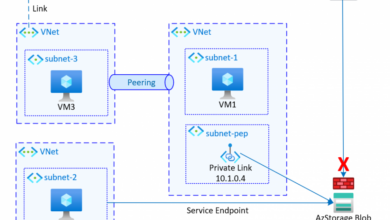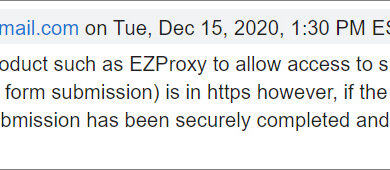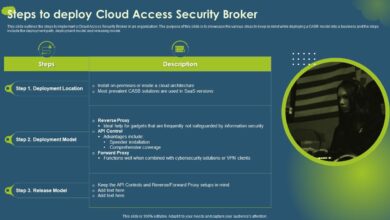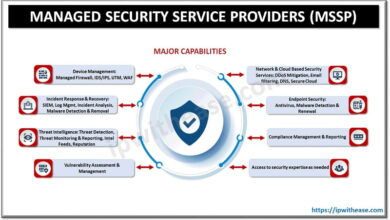
Box Bolsters Its Cloud Security with Automated Malware Detection Shield
Box bolsters its cloud security with automated malware detection shield, a game-changer in the fight against increasingly sophisticated cyber threats. This new system promises to significantly enhance data protection for Box users, offering a proactive defense against malicious code. But how does it work, and what does it mean for the average user? Let’s dive into the details of this powerful new security feature and explore its impact on cloud security.
The core of Box’s enhanced security lies in its multi-layered approach to malware detection. This isn’t just a simple antivirus scan; it leverages advanced techniques like machine learning to identify and neutralize threats before they can cause damage. This proactive approach offers a significant advantage over reactive measures, protecting users from zero-day exploits and other emerging threats. The system also seamlessly integrates with existing Box functionalities, minimizing disruption to user workflows.
Box’s Enhanced Cloud Security
The cloud security landscape is constantly evolving, with new threats emerging daily. Box’s recent addition of an automated malware detection shield is a significant step towards bolstering its already robust security posture and addressing the growing concerns of data breaches and ransomware attacks in the cloud. This enhanced security layer provides an extra line of defense against sophisticated threats, offering peace of mind to users who rely on Box for storing and sharing sensitive information.Box’s new automated malware detection system leverages a multi-layered approach to identify and neutralize malicious files.
This proactive approach is crucial in a world where traditional signature-based antivirus solutions often struggle to keep up with the rapid evolution of malware.
Automated Malware Detection System Architecture
The system combines several key components working in concert. First, files uploaded to Box are subjected to static analysis, where algorithms examine the file’s structure and metadata for suspicious characteristics. This initial screening quickly identifies many common threats. Files that pass this initial screening then undergo dynamic analysis in a sandboxed environment. This allows the system to observe the file’s behavior without risking harm to the Box infrastructure or user data.
Advanced machine learning algorithms analyze the file’s behavior within the sandbox, identifying potentially malicious actions like unauthorized network connections or attempts to modify system settings. Finally, a threat intelligence feed continuously updates the system’s knowledge base with information about the latest malware strains, ensuring the system remains effective against emerging threats. The system automatically quarantines identified malicious files and notifies the user.
Comparison with Other Cloud Security Solutions
Box’s approach distinguishes itself through its integrated and automated nature. Unlike some solutions that require separate, potentially complex integrations, Box’s malware detection is seamlessly integrated into its core platform. This simplifies management and reduces the risk of configuration errors. While other cloud providers offer similar malware scanning capabilities, Box’s emphasis on proactive threat detection and its use of advanced machine learning sets it apart.
Many competitors rely primarily on signature-based detection, which is less effective against zero-day exploits and polymorphic malware. Box’s multi-layered approach, combining static and dynamic analysis with machine learning, provides a more comprehensive and adaptable defense.
Box’s enhanced cloud security, featuring an automated malware detection shield, is a game-changer. This focus on robust security complements the rapid development capabilities offered by platforms like Domino, as discussed in this insightful article on domino app dev the low code and pro code future. Ultimately, strong security measures like Box’s are crucial, no matter how quickly you build your applications.
Feature and Pricing Comparison
It’s difficult to provide exact pricing information without referencing specific Box plans and competitor offerings which change frequently. However, a general comparison of features can illustrate Box’s competitive position.
| Feature | Box | Competitor A (e.g., Dropbox Business) | Competitor B (e.g., Google Workspace) |
|---|---|---|---|
| Automated Malware Detection | Yes, integrated | Yes, but potentially requires third-party integration | Yes, integrated |
| Data Loss Prevention (DLP) | Yes | Yes | Yes |
| Access Control & Permissions | Granular control | Granular control | Granular control |
| Encryption (at rest and in transit) | Yes | Yes | Yes |
Malware Detection Mechanisms: Box Bolsters Its Cloud Security With Automated Malware Detection Shield
Box’s automated malware detection shield employs a multi-layered approach to identify and neutralize threats targeting files stored within its cloud environment. This robust system combines several powerful techniques to achieve a high level of accuracy and efficiency in protecting user data. The system is designed to be proactive, constantly learning and adapting to the ever-evolving landscape of malware.
The core of Box’s malware detection relies on a combination of signature-based detection, heuristic analysis, and machine learning algorithms. Each method plays a crucial role in identifying malicious files, with their strengths and weaknesses complementing one another to provide comprehensive protection.
Signature-Based Detection
Signature-based detection is a traditional method that compares files against a database of known malware signatures. These signatures are unique patterns of code or data associated with specific malware samples. If a file matches a known signature, it’s flagged as malicious. This method is highly accurate for known threats, providing immediate identification and blocking. However, its main limitation is its inability to detect zero-day exploits or polymorphic malware, which constantly change their signatures to evade detection.
This method acts as a first line of defense, quickly identifying and blocking common threats.
Heuristic Analysis
Heuristic analysis examines the behavior of a file to identify suspicious activities. Instead of relying on known signatures, this method looks for patterns of behavior indicative of malware, such as attempts to access system resources, modify files, or communicate with external servers. This approach is effective against some polymorphic malware and zero-day threats that haven’t yet been identified through signature-based detection.
However, heuristic analysis can generate false positives, flagging benign files as malicious due to unusual behavior that might not be indicative of malicious intent. A careful balance needs to be struck to minimize these false positives while maintaining high detection rates.
Machine Learning Enhancement
Machine learning plays a pivotal role in enhancing the accuracy and efficiency of Box’s malware detection system. Machine learning algorithms are trained on massive datasets of both benign and malicious files, learning to identify subtle patterns and characteristics that distinguish between them. This allows the system to adapt to new threats more quickly and reduce the reliance on solely signature-based or heuristic methods.
Specifically, machine learning helps improve the accuracy of heuristic analysis by reducing false positives and improving the detection of previously unseen malware. The system continuously learns from new data, making it more resilient against evolving malware techniques. For example, by analyzing file metadata, network traffic associated with file uploads, and user behavior, the machine learning models can predict the likelihood of a file being malicious with increased precision.
Malware Detection Process Flowchart
The following describes the steps involved in Box’s malware detection process:
Imagine a flowchart with the following steps:
- File Upload: A user uploads a file to the Box cloud storage.
- Signature-Based Scan: The file is immediately scanned against a database of known malware signatures.
- Heuristic Analysis: If the signature scan is inconclusive, the file undergoes heuristic analysis to examine its behavior.
- Machine Learning Assessment: Machine learning models analyze the file’s characteristics and behavioral patterns to assess its risk level.
- Threat Determination: Based on the combined results of the above analyses, the system determines whether the file is malicious.
- Remediation: If the file is deemed malicious, it is quarantined or deleted, and the user is notified. If deemed safe, the file is accessible to the user.
Impact on User Experience

Implementing robust security features like Box’s automated malware detection shield inevitably impacts user experience. While enhanced security is crucial, it’s vital to minimize disruption to workflows and ensure a seamless user experience. The key lies in balancing security and usability. A well-designed system should be effective without being overly intrusive or cumbersome.The introduction of automated malware scanning might lead to occasional delays in file uploads and downloads as files are processed.
Users might also encounter notifications regarding potentially malicious files, requiring additional actions like review or quarantine. These interruptions, while necessary for security, can frustrate users if not managed effectively.
Mitigation Strategies for Negative Impacts
Box can employ several strategies to minimize the impact on user workflow. First, optimizing the malware scanning engine for speed and efficiency is paramount. This involves using advanced algorithms and leveraging Box’s infrastructure to process files quickly and concurrently. Second, providing clear and concise communication to users about the scanning process and potential delays can manage expectations.
Transparent messaging can prevent frustration caused by unexpected delays. Third, implementing a tiered approach to scanning, prioritizing critical files or users based on sensitivity levels, can further optimize performance. For example, files flagged as high-risk might undergo more rigorous scanning than standard documents. Finally, providing users with options to override the security checks (with appropriate warnings and logging) in specific situations could be considered, ensuring flexibility without compromising overall security.
User Interface Elements Related to Malware Detection
The user interface should provide clear and timely feedback regarding the malware detection system. Upon uploading a file, a progress bar indicating the scanning status should be visible. If a file is flagged as suspicious, a prominent alert should appear, clearly stating the issue and providing actionable options. This could involve options such as “Review File,” “Quarantine File,” or “Delete File,” with clear explanations of each action.
Notifications should be delivered through both in-app alerts and potentially email notifications for critical events, allowing users to address issues promptly. The alert system should be designed to avoid alert fatigue by filtering out low-risk events and prioritizing those requiring immediate attention. The interface should also display the malware detection history for each user, providing a clear audit trail of flagged files and actions taken.
Best Practices for Maintaining Optimal Security, Box bolsters its cloud security with automated malware detection shield
To ensure optimal security within the Box environment, users should follow several best practices. It is crucial to regularly update software and operating systems on all devices used to access Box. This ensures that security vulnerabilities are patched promptly. Users should exercise caution when opening files from unknown sources, carefully reviewing attachments before interacting with them. Strong passwords and multi-factor authentication are essential to protect accounts from unauthorized access.
Users should be aware of phishing attempts and avoid clicking suspicious links or downloading files from unverified sources. Regularly reviewing the Box security settings and updating them according to the organization’s security policies is also vital. Finally, users should report any suspicious activity to Box’s security team immediately to ensure prompt action and investigation.
Future Developments and Integrations
Box’s automated malware detection shield represents a significant leap forward in cloud security, but the journey towards a truly impenetrable system is ongoing. Continuous improvement and adaptation are crucial to staying ahead of the ever-evolving landscape of cyber threats. This section explores potential future enhancements and integrations that will further strengthen Box’s security posture.The future of Box’s malware detection will likely involve a multifaceted approach, incorporating advanced technologies and strategic partnerships to bolster its effectiveness and breadth of protection.
Box’s new automated malware detection shield is a significant step in bolstering its cloud security, a move that highlights the growing importance of proactive security measures. This proactive approach is perfectly complemented by the advancements in Cloud Security Posture Management (CSPM), as highlighted in this insightful article on bitglass and the rise of cloud security posture management , which emphasizes the need for comprehensive strategies.
Ultimately, Box’s enhanced security, combined with the broader CSPM movement, paints a picture of a more secure cloud future.
This includes not only improving the detection engine itself, but also enhancing integration with other Box services and third-party tools to create a more holistic and robust security ecosystem.
Enhanced Threat Intelligence and Machine Learning
Box’s current system relies on a combination of signature-based and heuristic analysis. Future iterations will likely leverage advanced machine learning algorithms to improve the accuracy and speed of malware detection. This will involve incorporating more sophisticated threat intelligence feeds, allowing the system to proactively identify and respond to emerging threats before they impact users. For instance, the system could learn from the behavior of known malicious files to identify similar patterns in previously unseen files, significantly improving its ability to detect zero-day exploits.
The integration of advanced sandboxing techniques, which execute suspicious files in a controlled environment to observe their behavior, will also enhance the accuracy of the system.
Seamless Integration with Box’s Existing Ecosystem
The effectiveness of Box’s security features will be amplified by tighter integration with other Box services. For example, improved collaboration with Box Governance could enable automated quarantine and remediation of infected files based on predefined policies. Similarly, closer integration with Box Shield, Box’s existing security solution, could create a unified security console providing a single pane of glass for managing all security alerts and responses.
This integrated approach streamlines workflows and improves overall efficiency in handling security incidents.
Strategic Partnerships and Third-Party Integrations
Collaborating with leading security vendors will expand Box’s capabilities and provide access to cutting-edge threat intelligence. Integration with Security Information and Event Management (SIEM) systems will enable better correlation of security events across different platforms, providing a more comprehensive view of the security landscape. This integration could provide real-time alerts and automated responses to security incidents, minimizing the impact on users and data.
Partnerships could also extend to advanced threat hunting platforms, allowing Box to proactively identify and mitigate sophisticated attacks that might otherwise evade detection.
Potential Future Features and Integrations
The following bullet points Artikel potential future features and integrations for Box’s automated malware detection system:
- Improved machine learning algorithms for more accurate and faster malware detection.
- Integration with advanced sandboxing technologies for enhanced threat analysis.
- Real-time threat intelligence feeds for proactive identification of emerging threats.
- Seamless integration with Box Governance for automated quarantine and remediation.
- Unified security console integrating Box Shield and malware detection for streamlined management.
- Integration with leading SIEM systems for enhanced threat correlation and response.
- Partnerships with advanced threat hunting platforms for proactive threat mitigation.
- Support for a wider range of file types and formats.
- Improved user notification and reporting mechanisms.
- Automated vulnerability patching and remediation capabilities.
Security Auditing and Reporting
Box’s commitment to robust cloud security extends beyond malware detection; it encompasses comprehensive auditing and reporting capabilities designed to provide organizations with complete visibility into their security posture. These features offer detailed insights into security events, allowing for proactive threat management and compliance demonstration.Box employs a multi-layered approach to security auditing. This involves continuous monitoring of system logs, user activity, and malware detection events.
The system automatically captures critical data points, such as the date and time of an event, the user involved (if applicable), the type of malware detected (if any), the affected files or folders, and the actions taken in response. This comprehensive logging allows for detailed reconstruction of security events, aiding in incident response and investigation.
Audit Log Details and Access
Box’s audit logs provide a granular record of security-relevant events. Access to these logs is typically controlled through role-based access controls (RBAC), ensuring that only authorized personnel, such as security administrators or compliance officers, can access and review this sensitive information. The logs themselves are regularly backed up and stored securely, protecting against data loss and unauthorized access. The level of detail within the logs can be customized to meet specific organizational needs, allowing for the filtering and prioritization of important events.
Types of Security Reports
Box generates various security reports to facilitate analysis and compliance efforts. These reports can be customized to specific timeframes and include details such as the number of malware detections, the types of malware identified, the number of users affected, and the remediation actions taken. For example, a weekly summary report might show the overall number of malware threats detected, categorized by type (e.g., viruses, Trojans, ransomware), highlighting any significant trends or patterns.
A more detailed report might focus on a specific incident, providing a timeline of events, user activity, and the steps taken to mitigate the threat. These reports are crucial for demonstrating compliance with regulations such as HIPAA, GDPR, or PCI DSS.
Ensuring Report Accuracy and Reliability
Box employs rigorous processes to ensure the accuracy and reliability of its security reports. This includes regular audits of the reporting system itself, verification of data integrity through checksums and other validation techniques, and continuous monitoring for any anomalies or inconsistencies. The system is designed to maintain data integrity and prevent unauthorized modification of audit logs. Regular updates to the malware detection engine and reporting infrastructure further enhance accuracy and reliability.
The system also undergoes rigorous penetration testing to identify and address potential vulnerabilities that could compromise the integrity of the reports.
Meeting Compliance Requirements
Box’s comprehensive reporting capabilities help organizations meet various compliance requirements. The detailed audit trails and customizable reports provide the necessary documentation to demonstrate adherence to industry standards and regulatory obligations. Organizations can use these reports to demonstrate their commitment to data security, comply with audits, and respond effectively to security incidents. The ability to filter and export reports allows for easy integration with other security information and event management (SIEM) systems, providing a centralized view of security across the organization’s infrastructure.
The reports can also be used to demonstrate due diligence in responding to security threats and maintaining a secure environment.
Case Studies and Examples
Box’s automated malware detection shield offers a robust layer of protection for cloud-based data. Let’s explore some hypothetical scenarios to illustrate its effectiveness and limitations. These examples are intended to highlight the system’s capabilities and potential challenges, not to represent specific real-world incidents.The system’s effectiveness relies on a combination of signature-based detection, heuristic analysis, and machine learning algorithms.
This multi-layered approach allows it to identify a wide range of threats, from known malware variants to newly emerging ones. However, the system is not infallible, and some situations may require human intervention.
Successful Attack Prevention Scenarios
The automated malware detection shield could prevent several types of attacks. For example, imagine a user downloads a seemingly harmless document attached to a phishing email. Unbeknownst to the user, this document contains a sophisticated zero-day exploit designed to compromise the system. Box’s system, through its heuristic analysis, would identify the malicious code embedded within the document before it could execute, preventing the exploit from gaining access to the user’s data.
Similarly, an attempt to upload a file containing ransomware to Box would be immediately flagged and blocked by the system’s signature-based detection engine. The system could also detect and block malicious macros within office documents. Even if a previously unknown malware variant were uploaded, the system’s machine learning algorithms might still identify unusual behavior and quarantine the file for further analysis.
Scenarios Requiring Human Intervention
While the system is highly effective, certain scenarios may necessitate human intervention. For instance, a false positive might occur where a legitimate file is incorrectly identified as malicious. This could happen if the file contains code that triggers the system’s heuristic analysis but is not actually harmful. In such cases, a human security analyst would review the flagged file and determine if it is indeed safe.
Another scenario where human intervention is needed is when the system encounters a highly sophisticated, polymorphic malware that constantly changes its signature to evade detection. These sophisticated attacks require specialized analysis and potentially custom signatures to be created. Finally, situations involving insider threats might necessitate a more comprehensive investigation beyond the capabilities of automated systems.
Malware Types Detected
The system is designed to detect a wide range of malware, including viruses, worms, trojans, ransomware, spyware, adware, and rootkits. It also detects potentially unwanted programs (PUPs) that might not be strictly malicious but can still compromise system security or user privacy. The system continuously updates its malware definitions to keep pace with evolving threats.
Malware Detection Capabilities
| Malware Type | Detection Method | System Response | User Impact |
|---|---|---|---|
| Virus | Signature-based detection, heuristic analysis | File quarantine, alert notification | File access blocked, notification of potential threat |
| Ransomware | Behavioral analysis, signature-based detection | File quarantine, system alert, prevention of encryption | File access blocked, notification of potential threat, data protection |
| Trojan | Heuristic analysis, sandboxing | File quarantine, alert notification | File access blocked, notification of potential threat |
| Spyware | Behavioral analysis, network monitoring | Alert notification, potential data breach investigation | Notification of potential threat, data breach mitigation |
End of Discussion

Box’s new automated malware detection shield represents a significant leap forward in cloud security. By combining advanced detection methods with a user-friendly interface, Box empowers its users to maintain a robust and secure cloud environment. While no system is foolproof, this proactive approach offers a strong defense against a wide range of threats, enhancing the overall security posture for businesses and individuals alike.
The future looks bright for Box’s security offerings, with ongoing development promising even greater protection against evolving cyber threats.
FAQ Summary
What types of malware does Box’s shield detect?
The shield is designed to detect a wide range of malware, including viruses, Trojans, ransomware, spyware, and other malicious code. The system continuously updates its threat library to stay ahead of emerging threats.
How does the system handle false positives?
Box employs sophisticated algorithms and machine learning to minimize false positives. However, there’s always a small chance of a false positive. The system provides mechanisms for users to review flagged files and restore them if necessary.
Is my data encrypted while being scanned?
Box utilizes secure encryption protocols throughout the file upload and scanning process, ensuring your data remains confidential even during malware detection.
What happens if malware is detected?
If malware is detected, the system will quarantine the affected file and notify the user. Box provides options for remediation, including deleting or restoring the file after cleaning.





